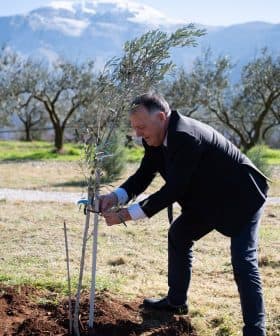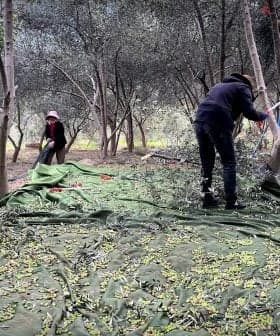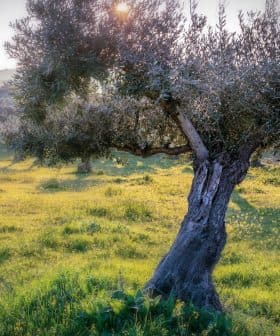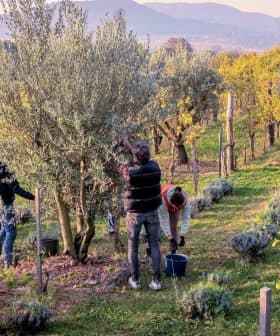Olive Trees a Popular Choice in the Gardens of Italy's Country Homes
Whether it is a single, monumental tree or an entire plantation, olive trees are the most requested addition to Alice Collantoni's residential landscape designs.
 cant3
cant3 6.5K reads
6.5K readsAlice Collantoni, a specialist in garden and landscape design, believes that the olive tree is highly requested by international customers for use in garden compositions, particularly in Tuscany where it is often incorporated on large properties alongside vineyards and cypresses. The olive tree is valued not only for its aesthetic qualities but also for its practical benefits, providing shade during warmer months and serving as a focal point in gardens, especially when combined with Mediterranean scrub plants.
“In my experience with international customers, I can say that the olive tree is one of the most loved plants and is undoubtedly at the top of the requests for use in the composition of a garden,” said Alice Collantoni, an architect who specializes in garden and landscape design.
We met Collantoni on the southern coast of Tuscany, in the seaport town of Porto Santo Stefano, on the promontory of Monte Argentario, whose name, according to a legend, derives from the silver (‘argento’ in Italian) shadings of leaves of the olive trees widespread in the area.
A landmark with a practical use thanks to the shade that it provides during the warmer months.
In Tuscany, an olive grove is frequently requested on large properties, planted with traditional spacing or high-density, often flanked by a vineyard and cypresses. The olive tree is requested not only for oil production, but also for a purely aesthetic function.
“The olive grove is a must,” the architect explained. “When it is not possible to include a plantation in the project, a unique plant, secular if possible, is individually planted as a ‘totem’ of the house.”
The most used variety is Leccino for the great resistance to pathogens combined with its aesthetic qualities, but some customers require cultivars for table olives, like Ascolana, Bella di Spagna and Santa Caterina, due to the visual impact of their larger fruits.
“The olive tree has a good weather adaptability,” the architect explained. “It does not have problems of salt aerosol or defoliation, thanks to great resistance to the warm Mediterranean ‘Sirocco’ wind, which can dry up the foliage of fruit trees.”
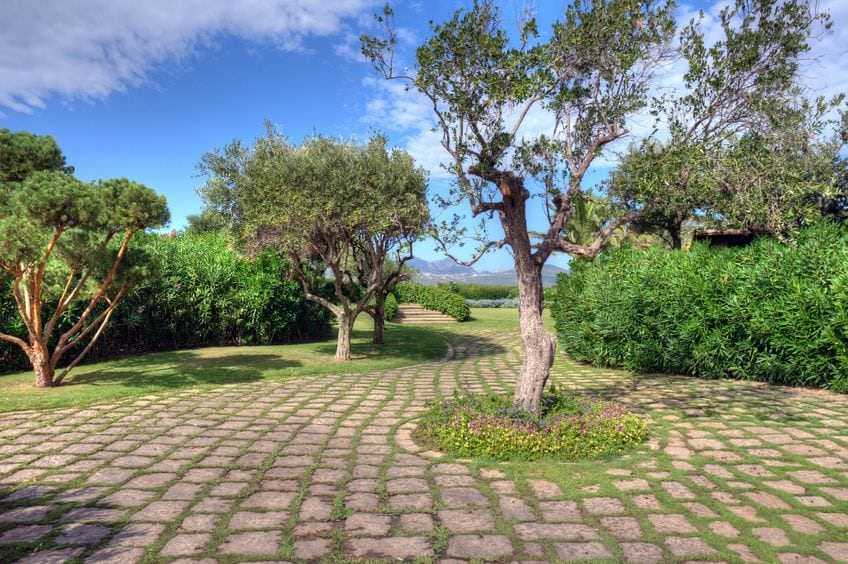
“The single olive tree is usually associated with plants of the Mediterranean scrub, like rosemary, broom, lentisque and myrtle,” Collantoni explained. It can be disposed on a pre-existent hill or a high ground can be created with earthmoving to adapt to the landscape. “Thanks to build-ups and depressions, the olive tree provides the focus of the garden, a landmark with a practical use thanks to the shade that it provides during the warmer months.”

Alice Collantoni
If for aesthetic purposes, the plant requires a kind of different pruning than would be needed for production, it is carried out in the same period, from December to March. “Keeping one-to-two ratio between the canopy and the trunk, the crown should be harmonious, round, pleasing to the eye,” she suggested.
There is a great demand, from Italian and American clients, for single olive trees or small plantations dedicated to limited production, often flanked by a vegetable garden. A lower demand comes from Eastern European and Russian customers, less used to the culture of olive oil.
The olive tree is not widely used in the so-called ‘Italian garden,’ typical of the villas near Florence, with the topiary hedge cut into specific shapes. “Due to less regular and less compact foliage than plants like box, myrtle and cypress, it is rarely requested,” Collantoni explained.
Our plant is widely used in the ‘English Gardens,’ in Italy. “Characterized by curved lines and trails through flowering shrubs, wild and natural, it is ideal for this.”
It is also requested in the ‘French Garden,’ identified by a planting logic based on the height of the plants and a natural compositional style made of sinuous shapes, and of course in the ‘Mediterranean garden,’ which Collantoni described as a kind of composition “in which various styles are used, such as English and French, but with typical Mediterranean species which require low water consumption, particularly plants with ‘gray’ leaves, like olives, myrtle, silver ragwort and lavender, for their adaptability to this specific climatic condition.”


